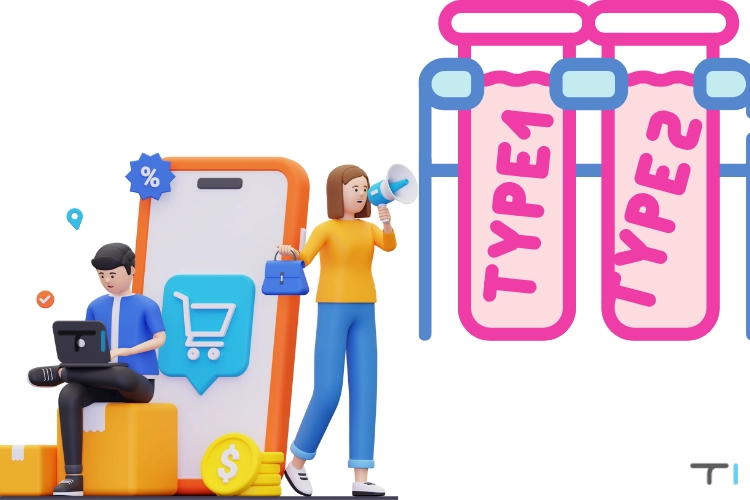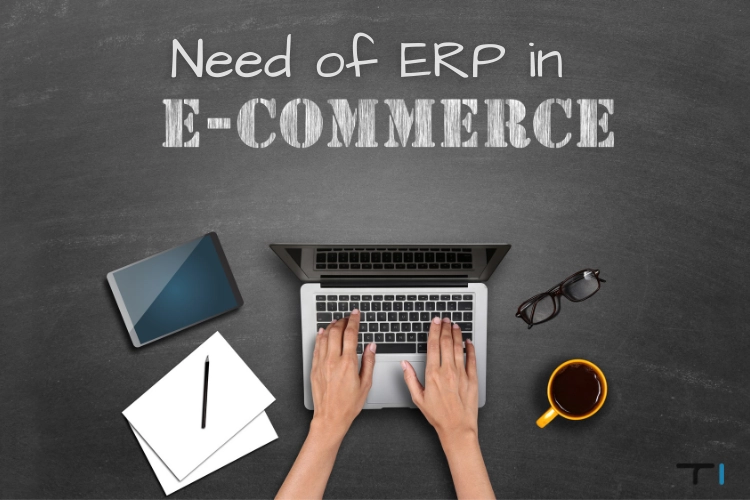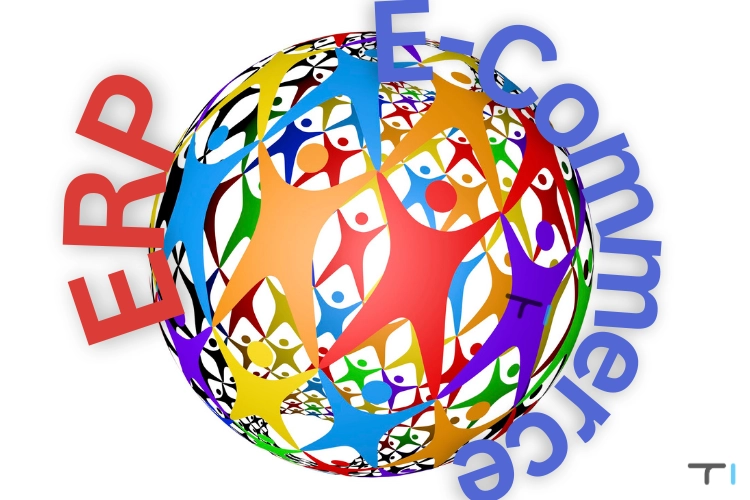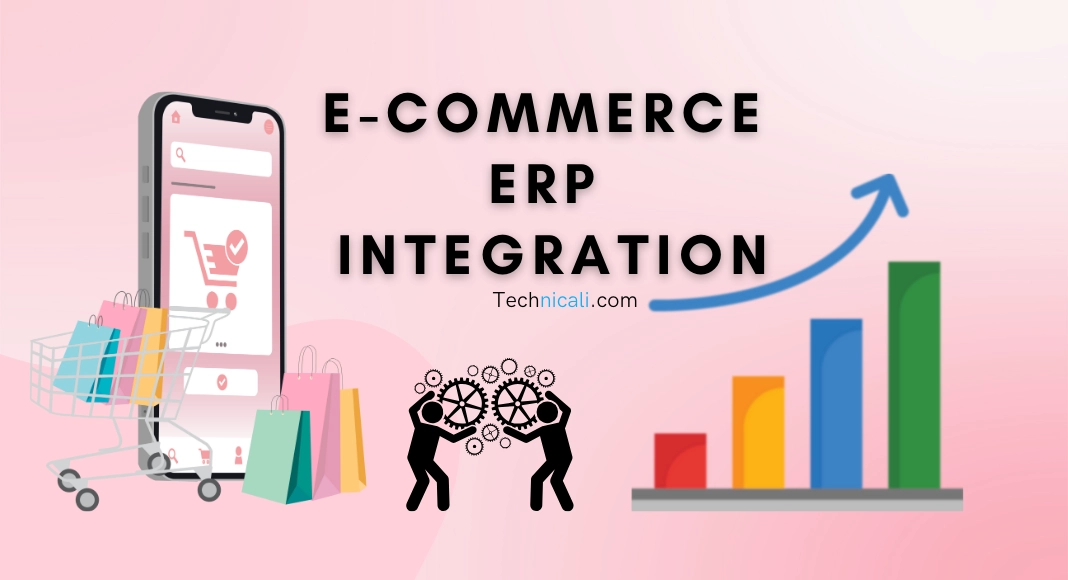“You can’t just open a website and expect people to flood in. If you really want to succeed, you have to create traffic.” – Joel Anderson, former Walmart CEO
Right at the core of the e-commerce revolution, we’ve got Enterprise Resource Planning (ERP) – the ultimate guide to modernizing businesses. The fusion of ERP and e-commerce isn’t just some fad; it’s a game-changer turning the commercial scene upside down. So buckle up as we dive into the exciting world of this mind-blowing combo, arming CEOs and managers of SaaS businesses with mind-blowing insights.
Contents
- 1 What is E-Commerce ERP Integration?
- 2 Need for ERP in E-Commerce
- 3 Benefits of ERP in E-Commerce
- 4 Integrating ERP with Online Shopping Platforms
- 5 E-Commerce and ERP Synchronization
- 6 How to Integrate ERP with E-Commerce
- 7 Challenges in E-Commerce ERP Integration
- 8 ERP E-Commerce Integration Best Practices
- 9 Specialized E-Commerce ERP Integration Tools
- 10 Conclusion
What is E-Commerce ERP Integration?

Definition of ERP Integration
At its core, ERP integration is the harmonious alignment of the ERP system with e-commerce platforms, creating a single, unified entity. This alliance is designed to streamline processes, making the business more efficient and responsive to customer needs.
Understanding E-Commerce Systems
E-commerce systems, the digital storefronts, capture customer interest, process sales, and handle transactions. They are the rockstars of e-commerce platforms, the customer experience, and the face of the online retail presence.
Types of E-Commerce ERP Integration

Regarding e-commerce ERP integration, we’ve got some categories to break down. We’re talking about the nature of your e-commerce activities, the technical approach you will take, and how deep you want to get into the integration. We’ve got these main types, all listed in point form, and we’ll break them down for you.
Point-to-Point Integration:
Point-to-point integration is like the OG of ERP and e-commerce integration. It’s all about the direct connection between the ERP and e-commerce platforms. Simple, right? Things can get messy quickly if you’re juggling multiple systems that need to integrate with the ERP. This method might work for small businesses with one e-commerce channel, but let’s be real: it’s not gonna scale efficiently. So, it’s time to explore better options unless you’re up for managing a chaotic web of integrations.
Middleware Integration:
With middleware, you can handle multiple integrations, making your architecture more manageable and your life easier. It brings some extra flare with data transformation, process orchestration, and error handling. It’s the flexible and scalable choice for businesses that dare to conquer multiple channels and backend systems.
Multichannel Integration:
Multichannel integration is the ultimate weapon for businesses slaying it across multiple online channels – their website, marketplaces, and social media platforms. This integration ensures data from all channels flows back to the ERP system, making managing inventory, orders, and customer data a piece of cake. No more overselling headaches! It keeps the customer experience looking good with consistent product info and stock levels, no matter where they shop.
API-Based Integration:
API-based integration is like connecting the dots between your e-commerce platform and ERP system. It’s all about real-time data transfer and automating the heck out of everything! Syncing systems has never been easier. This integration is so flexible it can exchange all sorts of data.
Custom Integration:
Custom integration is a one-of-a-kind solution that gives your business the VIP treatment. It’s for those companies with seriously unique processes or those who demand a level of integration that off-the-shelf solutions can’t handle. Sure, it can be a bit pricey and time-consuming to develop, but the functionality and efficiency it brings are off the charts. Say no to standard integrations, and embrace the custom integration!
ERP as the E-Commerce Platform:
Some businesses think using their ERP system as the whole shebang for their e-commerce platform is a brilliant idea. They’re all about that unified integration, where the same ERP and e-commerce front system takes care of everything from product listings to order fulfillment and customer service. Sure, it simplifies tech and data management, but let’s be real: it might limit the e-commerce features and give customers a less-than-awesome shopping experience.
Third-Party Connector Integration:
Third-party connectors are like ready-made magic spells that connect ERP systems with specific e-commerce platforms. They’re the shortcut to integration, saving you time and money because who needs unnecessary customization, right? They’re great for most platform combos, but they might not cover all the wild possibilities or give you the freedom to go crazy with customization.
Regarding e-commerce ERP integration, each type has its perks and hurdles. Now, businesses must look at their needs, tech skills, and growth plans to figure out which integration will rock their operations, now and in the future.
Need for ERP in E-Commerce

Handling Complex Business Processes
E-commerce operations are like navigating a wild jungle, juggling supplier relationships, and handling pesky customer returns. But fear not because ERP comes in as the ultimate mastermind, orchestrating these complex processes. The secret sauce syncs up every bit of your business operations, ensuring a smooth journey from procurement to delivery.
The Demand for Real-Time Data
E-commerce thrives on the need for instant gratification, and let’s face it, real-time data is non-negotiable. An ERP system is the backbone for real-time analytics, giving e-commerce platforms and businesses an advantage with instant access to sales data, inventory levels, and customer interactions. This allows agile responses to market changes, stocking up like a pro, and rocking dynamic pricing strategies.
Enhancing Customer Experience
Today’s shoppers demand a smooth shopping experience like butter and customized just for them. ERP systems come to the rescue by bringing together customer data from all angles, unleashing the power of personalized marketing, lightning-fast order processing, and top-notch customer service. With a 360-degree view of customer interactions, businesses can serve up tailor-made offerings, predict needs like fortune tellers, and crush issues before they even stand a chance.
Streamlining Inventory Management
In e-commerce, nailing inventory management is freaking crucial, my friend. ERP systems come in clutch with fancy tools for tracking stock levels, predicting demand, and automating reorder processes. No more messing around with overstocking or stockouts, keeping that cash flow flowing and customer cravings satisfied. With an ERP system, you get a real-time view of inventory across all your warehouses and channels, helping you master the tricky art of supply and demand.
Automation of Back-Office Functions
Back-office functions may not be in the spotlight, but they’re the backbone of any e-commerce business. Enter ERP integration that automates accounting, payroll, compliance, and reporting. No more human blunders, more resources freed up, and staff can tackle the big guns. With ERP systems handling the boring stuff, businesses can unleash innovation and growth! Trust me, this operational backbone is rock-solid and efficient.
Benefits of ERP in E-Commerce

Improved Operational Efficiency
Implementing an ERP system in e-commerce settings is like unleashing a productivity beast! By automating boring tasks and streamlining operations, an ERP system eliminates manual work, reduces errors, and speeds up the execution of various tasks. It’s a move that ensures smooth sailing from order processing to customer service, making your e-commerce business a productivity powerhouse!
Enhanced Customer Satisfaction
Customer satisfaction is the most important thing in e-commerce, you know? And ERP systems? They rock at making it happen! They give companies this awesome, unified view of customer data and interactions. That means personalized experiences, quick service, and killer communication. And guess what? It’s all about making the customers feel like they’re VIPs! That’s how you get their loyalty, keep them coming back for more, and get them spreading the good word.
Accurate Inventory and Order Management
ERP systems have all the fancy tools you need to keep things in check with precision and ease. These give you real-time visibility into stock levels, track inventory across multiple locations, and even automate ordering so your supply always meets demand. No more stockouts or excess inventory, just prompt order fulfillment and happy customers.
Better Decision Making with Real-Time Analytics
Making smart decisions gives you a major edge, and ERP systems level it up by providing real-time analytics. These analytics spill the tea on sales trends, customer behavior, and how things run. With real-time info at your fingertips, managers can spot opportunities, nip problems in the bud, and steer the ship in the right direction.
Increased Sales and Profit Margins
An ERP system directly impacts the sales and profit margins of an e-commerce enterprise. It’s like the secret sauce that boosts operational efficiency, keeps customers happy, and manages inventory. And you know what? It’s the key to more sales! Also, it saves you serious dough by optimizing processes and kicking errors to the curb.
Seamless Multichannel Management
Managing multiple channels for e-commerce businesses can be a real pain. Enter the ERP system that combines all those channels for a seamless management experience. Say goodbye to inconsistent pricing, products, and promotions across channels. It’s time to synchronize that inventory and give customers the best shopping experience, no matter where or how they buy.
Cost Savings through Process Optimization
An ERP system is like a cost-saving superhero! It swoops in, optimizes processes, and curtails labor costs and operational expenses. Say goodbye to inaccurate orders and financial discrepancies because ERP is here to save the day! And, it boosts your supply chain, cutting costs left and right.
Integrating ERP with Online Shopping Platforms
Identifying the Right ERP System
Picking the right ERP system for an e-commerce business is like choosing your partner in crime – it’s a make-or-break moment! You must assess your business needs, size, and growth. Ensure the chosen ERP software matches your wicked strategic goals and can keep up with your ever-evolving requirements. Oh, and don’t forget to check if it’s got that special sauce for your industry, user-friendliness, and support services.
Mapping Business Processes
Before diving into the wild world of ERP systems, you must map out all those existing business rules and processes. Get a lay of the land and see how the data flows within your organization. It’s like creating a blueprint of operations, highlighting areas needing some love, and ensuring that an ERP solution fits your e-commerce business.
Customization vs. Off-the-Shelf Solutions
Regarding e-commerce, you have to choose customized ERP and e-commerce integration solutions or off-the-shelf products. Customized systems fit your needs like a tailored suit, but they can be pricey and time-consuming. On the other hand, off-the-shelf solutions are like the fast fashion of the business world – cheaper and quicker, but you might have to compromise on functionality. It all boils down to your unique needs, budget, and timeline.
Integration Planning and Strategy
Do you know what’s crucial for a successful ERP implementation? An integration plan! This should outline the goals, deadlines, and resources needed for the integration. And hey, don’t forget about the change management plan to handle the transition. We’re talking minimal disruption and getting those employees ready for the new way of doing things.
Technical Considerations for Integration
Integrating ERP into e-commerce systems is a complex beast that demands serious thought. We’re discussing compatibility with existing e-commerce platforms, infrastructure that can handle massive loads, and foolproof security measures to safeguard precious data. And hey, don’t forget about data migration, system testing, and backup procedures.
Maintaining Data Consistency
Data consistency across all systems is a must for the e-commerce game! When integrating an ERP system, you must set some ground rules for data entry, updates, and maintenance. There is no room for discrepancies! Regular audits and checks are a must to keep that data accurate, consistent, and reliable. It’s the foundation for making smart moves and gaining customer trust.
E-Commerce and ERP Synchronization

Importance of Data Synchronization
Data sync between e-commerce platforms and ERP systems is a must to keep info accurate and up-to-date. No more data chaos, no more errors. We’re all about that smooth flow, baby! Say goodbye to data silos and hello to real-time business decisions.
Real-Time vs. Batch Synchronization
We’ve got two ways to sync things: real-time and batch. Real-time sync is like snap instant updates, keeping all systems up-to-date with the latest happenings. It’s perfect for those time-sensitive decisions and operations, you know what I mean? On the other hand, batch sync is a bit more chill. It updates data regularly, which works fine for less urgent stuff and saves resources. So, choose your sync style wisely.
Managing Product Information
Do you know what’s key to e-commerce success? Accurate product info management, my friend! And guess what? ERP synchronization is here to save the day. It keeps your product deets, prices, and availability in sync across all selling channels. We have to manage that sync with utmost care – we don’t want unhappy customers or a wonky e-commerce storefront.
Synchronizing Orders and Customer Data
When you integrate ERP with e-commerce platforms, it’s like the ultimate sync party! Orders and customer data groove together seamlessly. Customer info and order deets automatically shimmy into the e-commerce ERP system, making order processing and fulfillment a breeze.
Financial Data Integration
Financial data integration is like the secret sauce of ERP and e-commerce sync. It’s all about keeping those sales, expenses, and profits on point in real-time. This slick integration brings you precise financial reporting, budgeting, and analysis for all your strategic planning and financial health monitoring needs.
Inventory Synchronization Challenges
Inventory synchronization is a real headache, my friend. Tracking stock levels across different warehouses and channels is no joke. Trust me, you don’t want to deal with the chaos of overstocking, stockouts, and lost sales. That’s why you need some inventory management features in your ERP. Keep those inventory records accurate and consistent.
How to Integrate ERP with E-Commerce

Assessing Business Requirements
Before integrating that fancy ERP system with your e-commerce platform, you must thoroughly assess those business requirements, my friend. Get down to the nitty-gritty of what each department needs, figure out which data points gotta be in sync, and don’t forget to gauge how much integration complexity your business can handle.
Choosing the Right Integration Approach
Picking the right integration approach is a tricky business. It’s all about the complexity of your existing systems, the data volume, and how much sync you want. You’ve got options, my friend! You can go for direct integration, rock those APIs, and bring in some third-party integration platforms.
The Role of Middleware in Integration
Middleware is like the ultimate wingman for integrating ERP with e-commerce. It’s the talker that bridges the gap between different systems. It makes the integration process a breeze, adds some extra security swag, and lets you flex with data handling and process automation.
Developing a Phased Integration Plan
Who needs a boring old integration when you can have a phased integration plan? It’s all about taking it slow and steady, breaking things down into manageable phases. This way, businesses can keep the disruption to a minimum, test things bit by bit, and tackle any issues that pop up along the way.
Training and Change Management
Training and change management are the secret weapons to arm your staff for the new systems and processes. We’re talking comprehensive ERP system training and fostering a culture of adaptability and continuous improvement; all wrapped up in spirit.
Monitoring and Optimization Post-Integration
Once the ERP and e-commerce platforms join forces, it’s time to keep a close eye on things. We have to make sure the system is doing its thing, giving us those sweet insights for constant improvement. Let’s not forget it also helps us stick it to the man by adapting to those market demands.
Challenges in E-Commerce ERP Integration

Data Security and Privacy Concerns
Businesses face many pesky data security and privacy concerns when integrating Enterprise Resource Planning (ERP) systems with e-commerce platforms. It’s like dealing with a bunch of nosy neighbors poking their noses into your business! But fear not, my friends. Protecting sensitive customer and business data is the name of the game. We have to keep those sneaky intruders out and prevent any data breaches. So, let’s beef up security measures, follow the rules, and create a safe and trustworthy space for our customers.
Legacy System Compatibility
A lot of businesses, right, they’re stuck with these ancient legacy systems, and they’re trying to make them play nice with fancy new ERP solutions. Talk about a compatibility nightmare! It’s like trying to fit a round peg into a square hole. You just have to throw in some extra resources to bridge those technological gaps and deal with the increased complexity and costs.
Scalability and Performance Issues
As e-commerce businesses boom and reach for the stars, scalability becomes a freakin’ crucial factor. The ERP system better steps up its game and handles those skyrocketing transaction volumes and data loads without compromising performance.
User Adoption and Resistance
Resistance to change is a common challenge in any system integration. Ensuring user buy-in through involvement in the integration process and clear communication of the benefits is key to overcoming this obstacle.
Cost and ROI Considerations
The cost of integrating an ERP system with an e-commerce platform can be significant. Businesses must carefully consider the return on investment and whether the benefits of integration justify the costs involved.
ERP E-Commerce Integration Best Practices

Establishing Clear Objectives
Having crystal clear objectives is an absolute must for nailing that ERP integration. Ensure those goals align with your business vision and give you a roadmap to conquer the integration process.
Involving Stakeholders Early
Getting key stakeholders involved in the integration process is a smart move. It’s like bringing everyone to the table and saying, “Hey, let’s hear what you all have to say!” That way, we consider all perspectives and get broad support for the project across the organization.
Ensuring Robust Data Governance
Implementing strong data governance policies is crucial to guarantee data accuracy, privacy, and security at every stage of the integration process. By establishing comprehensive policies and procedures, organizations can effectively manage data quality, access controls, and data lifecycle management, ultimately fostering trust and reliability in the data ecosystem.
Prioritizing User Experience
The integration should always strive to level up the user experience for the savvy shoppers on the e-commerce platform and the cool cats using the ERP system.
Continuous Testing and Quality Assurance
Testing and quality assurance help to improve quality during integration. They help spot and tackle issues early on, making the transition smoother and the systems more reliable.
Specialized E-Commerce ERP Integration Tools

eBridge Connections
eBridge Connections is an integration platform bridging the gap between e-commerce and ERP systems. It’s all about that automated data exchange, ensuring your orders, inventory, product info, and shipping details flow seamlessly. No more hassle, no more headaches. And the best part? This supports many ERP systems and e-commerce platforms to streamline your operations without all that boring custom coding.
DiCentral
DiCentral is like the ultimate B2B integration solution suite. It’s got all the goods to automate and level up your whole supply chain management and communication. Say goodbye to the headaches of EDI compliance and hello to smooth integration. We’ve got the tools to connect your e-commerce platforms with ERP systems. Our offerings are about boosting transaction efficiency and ensuring you can easily exchange crucial operational data with your partners, suppliers, and customers.
MuleSoft Anypoint Platform
MuleSoft’s Anypoint Platform is like the ultimate integration wizard, connecting apps, data, and devices in the cloud and on-premises. It’s all about that API-led approach, creating a network of seamlessly integrated apps that can talk to each other like long-lost besties. The Anypoint Platform is no joke when it comes to its rock-solid design, letting you whip up, deploy, and manage APIs and integrations at a good speed. It’s the go-to for businesses that want to customize and control their integrations. It’s got you covered for managing connections between e-commerce solutions and ERP systems because it’s all about scalability.
Besides all those fancy solutions, the market is full of cool tools tailor-made for seamless e-commerce ERP integration. These tools come in different flavors – some are simple, others are complex, and some can even scale mountains! Businesses have many options to choose from based on their needs. Size, data volume, existing tech setup, and the desire for automation and reporting all play a role in tool selection. By the way, don’t forget to check out our awesome blog post on top ERP tools!
Conclusion

As e-commerce zooms ahead, ERP systems have gone from “nice-to-have” to “can’t-live-without” for businesses that want to stay ahead. The sync between e-commerce platforms and ERP systems is getting smoother, with real-time data exchanges becoming the new normal. This means mind-blowing customer experiences and streamlined internal processes. As businesses get into integration tools and best practices, we’re looking at a future where e-commerce and traditional operations merge into one big happy family. It’s all about being agile, responsive, and ready to tackle market changes. This future isn’t just about tech; it’s about having the smarts to make it work and take your business to new heights.

